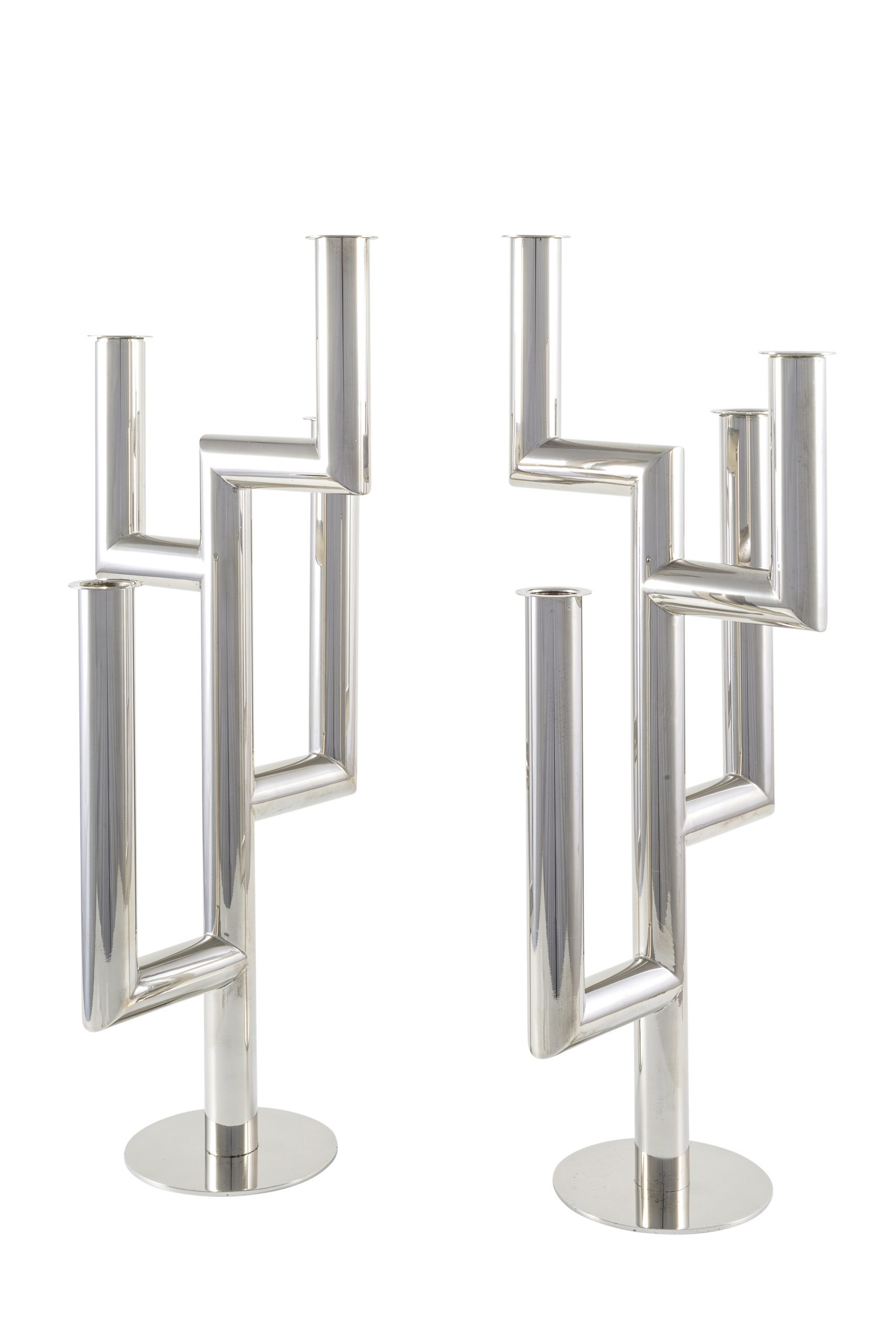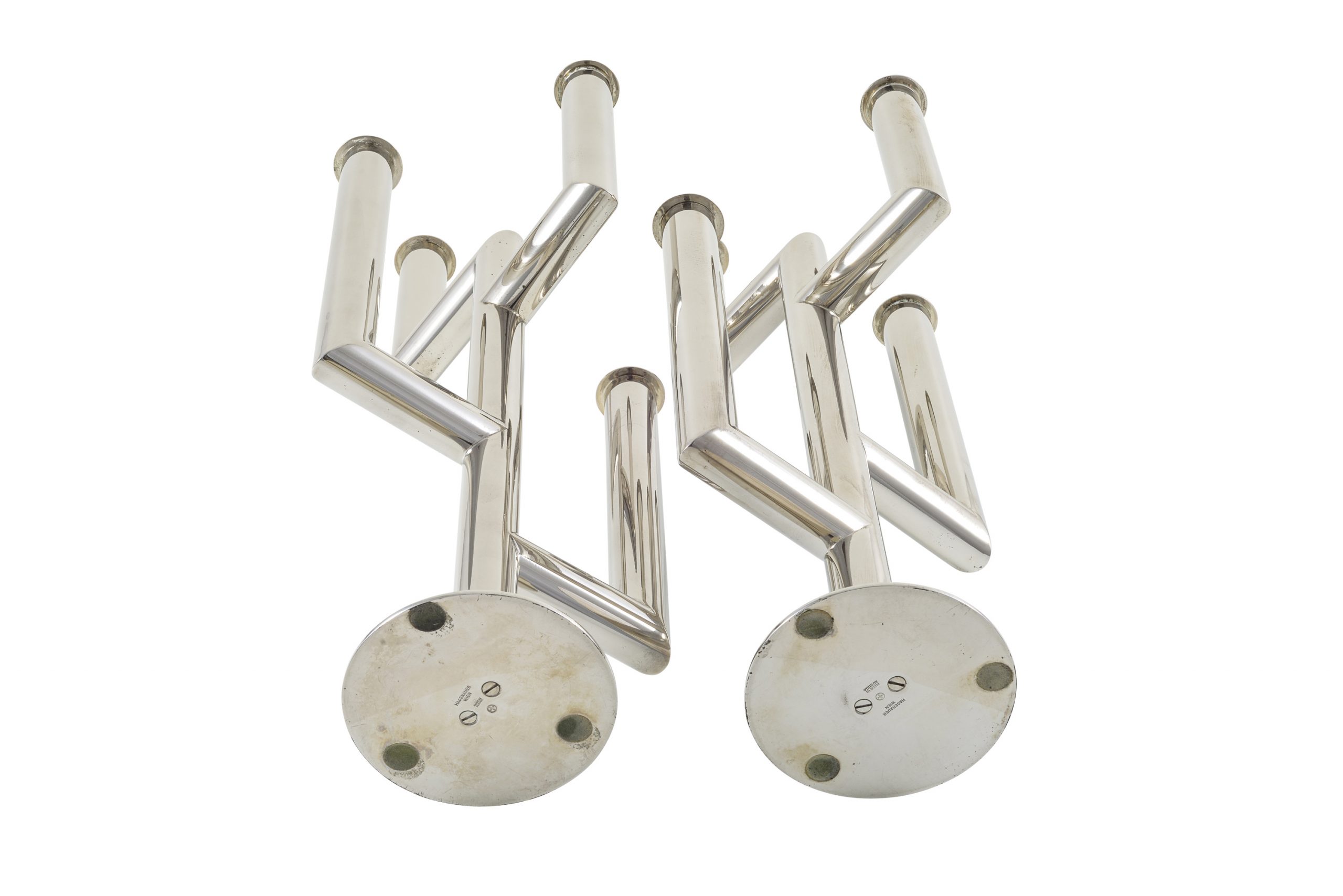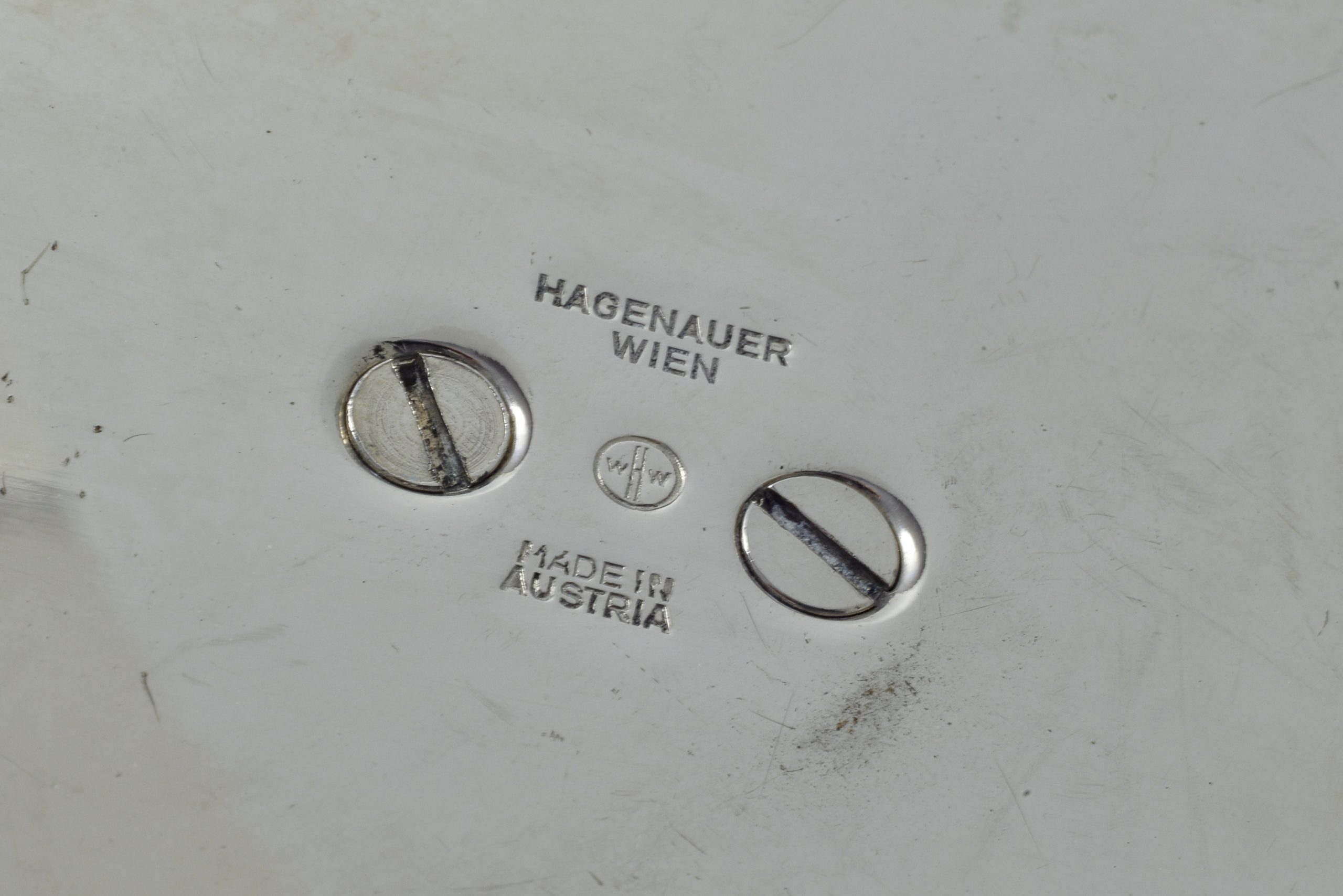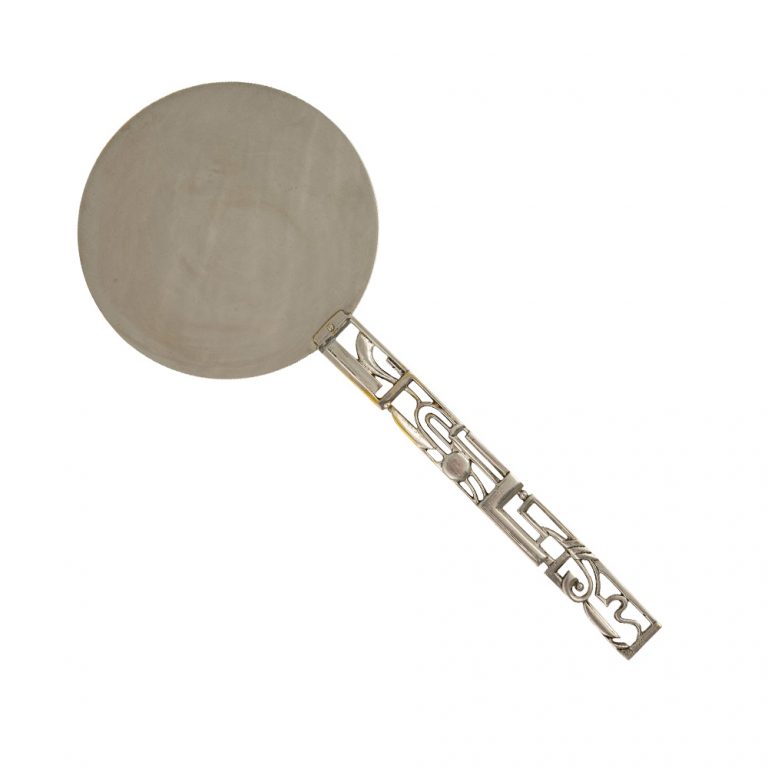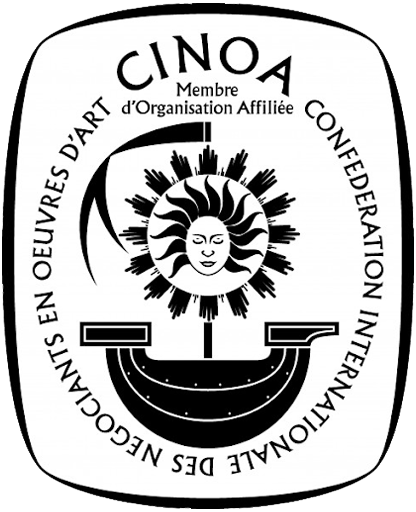Pair of candelabras Franz Hagenauer Werkstatte Hagenauer ca. 1930
Pair of candelabras “Tree”, Franz Hagenauer, Werkstatte Hagenauer Vienna, around 1930, mod. No. 2176, marked
Description
Franz and Karl Hagenauer won the gold medal at the 1930 Milan Triennale for their design of a candelabrum named “Baum” (transl. tree).
The design of the carefully welded brass tube with four arms and loosely resting candle holders on a round plinth was virtually trend-setting for its time. This early design piece was to become one of Hagenauer’s most successful models; the candelabrum was available in brass and nickel-plated brass. The reduced form language and the architectural design attracted a lot of media attention in 1930 and is still a sought-after design classic today.
ART HISTORICAL CONTEXT
Werkstätte Hagenauer – stylistic evolution and importance | Today, the Werkstätte Hagenauer is rightfully among the most important Austrian Arts & Crafts manufacturers of the 20th century. The clear, strict formal language combined with dynamic poses and the usage of brass, nickel-plated, patinated or bare, along with copper, alpaca and exotic wood shows a high level of recognition. However, it took the siblings Karl and Franz Hagenauer quite some time until they developed their own unique style. Karl and Franz both attended the Vienna School of Arts & Crafts and studied under Josef Hoffmann, Oskar Strnad, Anton Hanak and Dagobert Peche. Particularly the early works of Karl from the 1910s and 1920s show the influence of his teachers quite clearly. On the initiative of Josef Hoffmann, Karl designed some drafts for the Wiener Werkstätte, of which the fragile floral and figural patterns are quite similar to the works of Dagobert Peche (compared to the lidded jar with ivory knob). Starting in the 1920s, Karl’s work shows the first signs of stylistic change: Ornaments where beginning to step into the background whereas geometric and reduced forms became more dominant. Hagenauer changed the general models of the depictions of animals and people, and began to develop his own style, particularly in the figural segment (compare kneeling silver plated man). Limbs and proportions were stretched but were depicted more dynamically; the poses became dynamic and powerful (compare nickel-plated man in dynamic pose). The used materials changed from silver and ivory to warmer, semiprecious metals like brass, alpacca and copper. However, Hagenauer always had his eye on the high artisan quality of his products. With the complete enrolment of Franz Hagenauer into the workshop, between 1925 and 1931, the first three-dimensional heads and human figurines were created. During his whole life, Franz always valued beaten metal works more than simple every-day use items or cast busts. The first busts made of metal, meant as shopping window decorations, were created in the late 1920s. Meant as a counterpart to the plastic-made mannequins and decorations, those objects were presumably bought by wealthy quality- and art-conscious businessmen. The Werkstätte Hagenauer also produced larger-than-life models with a height of more than two metres. Those objects in particular show the creational force of the brothers Karl and Franz. The figurines were depicted in a heavily reduced manner, the sex only recognisable through specific characteristics, among others the shape of the face, the hairstyle or slightly round breasts. The usage of enamel was also part of their creation process, and mainly the lips of the figurines were executed in this material. In 1934, the Werkstätte Hagenauer moved to a new workshop in the Bernardgasse. The new rooms were bigger, and production could be expanded. In the 1930s, the first figurine out of a combination of metal and wood was created. It was a depiction of the famous singer and actress Josephine Backer, presumably designed by Karl Hagenauer. In this design, the tendency towards elegance and reduction is clearly noticeable (compare dancer with wooden skirt). Some of the most impressive figurines executed by the Werkstätte Hagenauer show this combination of living and lifeless material. Through this duality, the Hagenauer siblings could create sculptures with a unique charisma and lightness; the designs seem both elegant and grounded. During the time until the death of Karl Hagenauer in 1956, the beaten sculpts, busts and figurines made only a very small part of the workshop’s production palette. They also produced rails, applications, grilles and other every-day objects made from metal. After the death of his brother, Franz could once again dedicate himself to his true passion, the sculpture. In the beginning of the 1950s, the demand for figurines and sculptures made by the Werkstätte Hagenauer increased in the USA, and Franz could focus on the production and creation of new pieces. Until 1962, Franz did not only create new designs but he also altered existing ones and produced them. For example the candleholders on the candlesticks „Diana“ were executed in a slightly stricter manner, and the hairstyle and the poses of the sculptures were changed a little. The quality of the objects always remained on the same high level. From 1962 to 1976, Franz Hagenauer was a tutor at the Academy for Applied Arts in Vienna. Presumably in the wake of his tutorage, his style received new impulses. He reduced the depictions of his busts and sculptures and left the three-dimensional designs behind. In the late 1960s and early 1970s, new designs of profile heads came into being, which consisted partly of metal sheets with sweltered applications or only of bent stripes of brass. This further reduction shows the artistic development of Franz Hagenauer’s creational power once again, and he created objects of unique expression with simple but effective elegance. During this time, the Werkstätte Hagenauer also produced larger-than-life figurines. Motifs of men and women in sports poses and musicians were the most popular. Franz Hagenauer craved art and artistic creation so much that he regularly filled the wall of his office with sketches, until his death in 1986. Production of high-quality objects did not cease after his death and until the closure of the workshop on 30 December 1987. The siblings Karl and Franz Hagenauer strongly contributed in coining the term „design“ through their legacy and are surely among the most influential Austrian artists of the 20th century.

By sending the inquiry form, you accept the use of your data for this inquiry. Privacy Policy
1010 Wien
Monday to Friday: 11:00 a.m. – 7:00 p.m.
Saturday: 11:00 a.m. – 4:00 p.m.
and by appointment
Phone: +43 1 513 32 69
E-Mail: info@floriankolhammer.com





